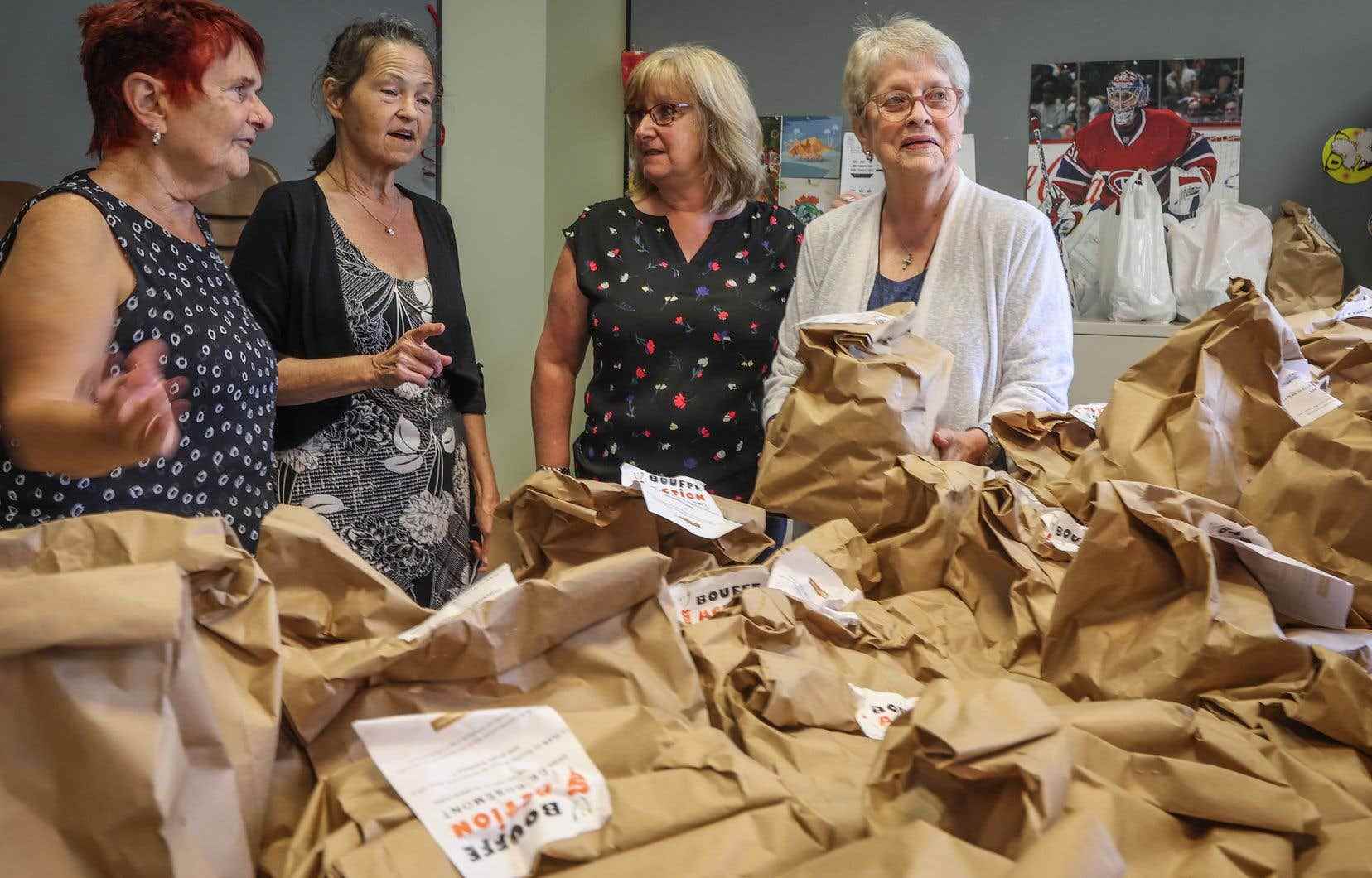Although the meteoric rise in inflation has recently changed the contents of your plates, for many Montrealers, distance is the number one obstacle to healthy eating. According to an analysis of To have tomore than half of the metropolitan area’s residential areas are more than a 10-minute walk from supermarkets: a lack of proximity that primarily affects the poorest.
After suffering a drop in income last year, Martine Côté turned to food assistance offered by the Society of Saint-Vincent de Paul in Saint-Léonard. Met when picking up her weekly basket, she says she came on foot, alongside her friend who lives a street away. “It took five minutes! they exclaim in unison.
If it weren’t for the organization, the two accomplices would have to take the bus or be driven by a relative to do their grocery shopping. “It would be too long on foot, you would have to go to Walmart or Super C, which are a 30-minute walk,” explains Martine Côté, adding with a laugh that she avoids convenience stores as much as possible.
A question of accessibility
“The more certain foods are accessible, the more we are inclined to consume them,” simply states Yan Kestens, professor of social and preventive medicine at the University of Montreal. This is why the issue of proximity is so important for public health actors. “When we have supply problems, we see that people fall back on convenience stores, where the supply of fresh produce is generally very poor,” adds the professor.
The borough of Saint-Léonard is one of those with the highest proportion of food deserts in the city of Montreal, according to our analysis. Support from the community is therefore essential to respond to the more than 700 households that use food bank services each week, according to Ellen Schryburt, local president of the Saint-Vincent de Paul Society and volunteer for more than 40 years.
“The Maxi, which used to be the most affordable grocery store in the area, has closed, so there are only two grocery stores left and they are much more expensive. And access is difficult, people have no choice but to get there by bus or by car. »
Among the boroughs where access to fresh food is the most restricted are L’Île-Bizard–Sainte-Geneviève, Montréal-Nord and Pierrefonds-Roxboro. More than 70% of the residential territory of these sectors constitutes a food desert, that is to say, you have to walk there for more than 10 minutes before finding a grocery store.
Our map only includes supermarkets and public markets in the metropolis. It therefore does not take into account certain so-called “ethnic” fruit stores and grocery stores, which often offer a wide variety of fruits and vegetables, because of the categorization of food establishments by the Quebec Ministry of Agriculture, Fisheries and Food. . According to data compiled manually by a team from the Institut national de santé publique du Québec (INSPQ), there were 93 fruit stores and 96 ethnic grocery stores on the island in 2018. It is impossible to know, however, how many are still open today. .
To see more precisely where the food deserts in your neighborhood are, enter the name of your borough in the map below.
Junk food more accessible
Beyond the proximity of establishments, the study of food deserts must take into account a second dimension, that of deprivation. Because in the more favored boroughs, such as Dollard-des-Ormeaux or L’Île-Bizard-Sainte-Geneviève, the obstacle of distance is easier to overcome when households have a car, recalls Yan Kestens.
Italy, El Salvador, Guatemala, Syria and more recently, Ukraine… Ellen Schryburt lists the different countries of origin of the waves of immigration that she has seen surge in Saint-Léonard in recent decades. Refugees have priority on the list of beneficiaries, says the volunteer, since they barely have enough to pay their rent, she explains. “They get $900 or $1,000 a month, they don’t have child benefits, no sun card, so they have very little money available for groceries. The borough is a common welcoming place for newcomers because of the affordability of housing, notes the volunteer.
While access to healthy food is sometimes difficult in underprivileged neighborhoods, access to fast food is less so. “The social gradients in exposure to junk food are mind-boggling! exclaims Yan Kestens. The school environment in privileged neighborhoods has very few McDonald’s, A&W or Pizza Pizza. On the contrary, in disadvantaged neighborhoods, there are a large number of fast food restaurants, notes the professor, who points out that in an ideal world the population of all neighborhoods would have an abundant supply of both cooked and fresh food.
The consequences of an unhealthy food environment are all the more striking in young people, he points out, since it is at this age that they develop their habits. “Some would say it’s an individual responsibility to choose what you eat wisely, but when there are more unhealthy options, you are constantly bombarded by the marketing of fast food, it’s becoming the norm around us. »
In the borough of Montreal-North, for example, there is only one supermarket for 9 fast food restaurants, while in Saint-Léonard, the supply is more abundant on both sides, with a total of 11 supermarkets and 24 restaurants. fast.
Moreover, in an attempt to limit these food swapsplaces where junk food surpasses access points to healthy foods, the borough of Côte-des-Neiges has severely restricted the areas where fast-food restaurants can set up thanks to zoning regulations, particularly near schools.
This is just one example of the initiatives taken to improve the situation in Montreal, where community projects for waste reduction, urban agriculture and the delivery of fruit and vegetable baskets abound. Support for organizations working in food security is at least $10 million per year in the region, according to a study by the CIUSSS du Centre-Sud-de-l’Île-de-Montréal published in 2018.
